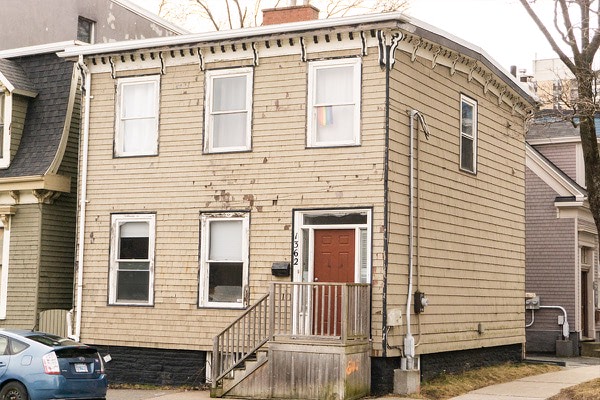Should you buy a fixer-upper? In this post, we review the benefits and drawbacks of this type of real estate purchase.

It’s time to bust these 5 mortgage misbeliefs
Securing a mortgage for a home is one of the biggest parts of the home buying process, and for many, one of the most intimidating. Since every mortgage application is slightly different, it can be hard to completely understand how it works until you’re going through the process yourself. Perhaps this is why there are so many mortgage misbeliefs out there, and why they can be so easy to believe. It’s important to consult a mortgage professional during the process so you don’t get sucked into these rumours. Here are five common mortgage misbeliefs you should clear from your head before you enter the housing market!
#1 Pre-qualification and pre-approval are the same
Although these two terms are sometimes used interchangeably, they have very different meanings. A pre-qualification is a more informal process, where you give a lender information about your income, credit, and debts, but these details aren’t verified with checks or paperwork. Even if all the information you provide is true, the lack of official verification gives it less influence. For this reason, a pre-qualification usually isn’t considered a legitimate insight into your financial situation. It’s mostly just used to give you an idea of what you can afford.
A pre-approval, on the other hand, is more official. The lender takes the same information, but actually performs credit checks to confirm details. Getting a pre-approval means the lender likes what they saw from your information, and are willing to give you a loan for the specified amount as long as your situation stays the same. These hold more weight with lenders.
#2 Pre-approval means approved
Adding on to the last myth: Just because you have a pre-approval doesn’t mean you have a mortgage. Mortgage misbeliefs like these are dangerous because they can impact your future mortgage approval. Yes, the lender gave you an estimated loan, but this was merely based on the info you provided at the time. If you come back one month later with tons of new debt or a job change, these financial adjustments might cause the lender to reevaluate you or back out. Once you’re pre-approved, the next important step is to not make any big financial changes. This means trying not to switch jobs or lower your income, or add on new debt. If you follow these guidelines, you have a good chance of securing a mortgage from that lender!
You don’t have to use the lender who pre-approved you. Pre-approval credit checks don’t impact your credit score, so you should shop around for different lenders and rates so you can ensure you’re securing the best deal. Of course, your mortgage broker can do this for you!
#3 Lenders and brokers do the same job
If you’re new to the industry, you might think lenders and brokers sound the same. It’s true they work in the same area, which is securing mortgages, but they do very different jobs in this space. Lenders provide the mortgage itself. They grant pre-approvals and loans, and they earn money in interest from your mortgage payments. Lenders aim to sell their products to you, which is in part how they earn money.
Brokers, however, find those lenders for you. They review your situation, help define your goals, then connect you with potential lenders and negotiate for you. Brokers want to hunt down the right product for you and have an objective outlook on who the right lender is. Brokers work for you and aim to find you the perfect product, while lenders aim to be that perfect product.
#4 Your credit score must be perfect
Mortgage misbeliefs surrounding credit are very prominent. You should strive to have as high a credit score as possible, but you don’t need to be in the 800+ range to get a mortgage. Of course having a good credit score is important, but your income and assets also play roles in securing mortgage financing. Many buyers successfully purchase homes with credit scores in the 600s.
However, it’s generally true that the lower your credit score, the higher your interest rates are likely to be. This is because borrowers with lower credit are considered higher risk, and lenders charge higher rates for their protection. You can work towards increasing your credit score before you apply for a mortgage if you want to secure the best interest rates.
#5 It’s impossible to buy your first home
Finally, the gloomiest of the mortgage misbeliefs: There’s no way to enter the market as a first-time buyer. A lot of potential buyers have had trouble in the market lately, due to low supply and high demand sending housing prices through the roof in many areas. This has left several Canadians feeling like homeownership is impossible.
However, while today’s market is definitely tricky, first-time buyers have options! For example, The First-Time Home Buyer Incentive is a program where the Canadian government contributes to the cost of buying a home, often five per cent. This means buyers don’t have to save as much money for their down payment, and the added boost from the government can result in a smaller mortgage. This lowers buyers’ monthly payments and saves them money.
Remember, in many cases, you also only need a five per cent down payment to buy a home, not the typical 20 per cent we often see. Down payments below 20 per cent require the purchase of mortgage default insurance, and these premiums are included in your mortgage payments. This allows buyers to enter the market without having to save up as much! The only thing to keep in mind is this insurance is only available for homes under $1 million.
It’s important to recognize these mortgage misbeliefs so they don’t affect your chances of purchasing a home. If you have any questions or are looking to buy a home, get in touch with us at Clinton Wilkins Mortgage Team! You can call us at (902) 482-2770 or contact us here.


